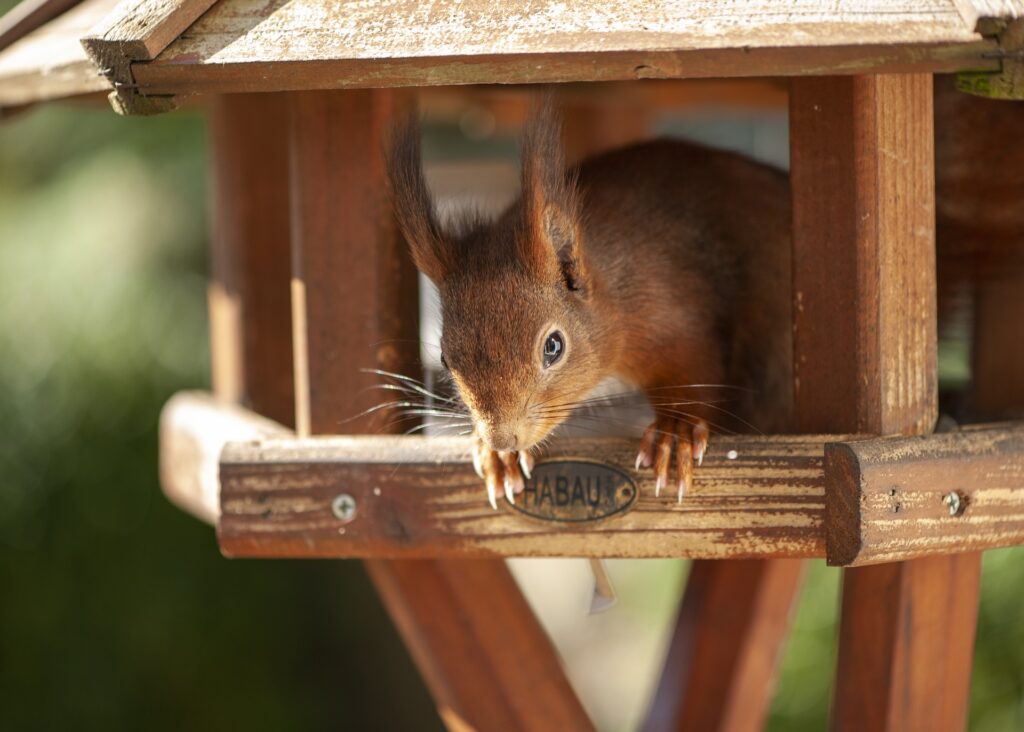Humans and wildlife can coexist peacefully — at least around backyards.

A new paper reports that some wild species can become more abundant in suburban areas than in wild ones mainly due to available shelter, and food handed out by people. The study aimed to understand the “urban wildlife paradox”: the observation that while human development generally leads to a drop in biodiversity, moderately-developed areas can harbor larger, more diverse mammal populations than wild areas.
Feeding friends
“There’s this idea that nature and humans don’t coexist well,” says co-author Roland Kays, a research associate professor at North Carolina State University. “But what we’ve been finding is that when it comes to mammals, especially in North America, they actually do pretty well around people. You end up with high abundance. You expect there to be fewer animals, and there’s actually more.”
“They’re using the gardens a little bit, they’re using the brush piles a little bit, and they’re using the water features, but feeding has the most dramatic influence on animal activity in the backyard.”
Unsurprisingly, the study found that the main reason this happens is that people tend to feed (either directly or indirectly) the wild animals that swing by their backyards. To a lesser degree, they’re also providing shelter and protection for these animals.
In order to test their hypothesis, the researchers installed cameras in the backyards of 58 homes near Raleigh, Durham, and Chapel Hill in the USA, and in forests close to rural and urban areas (for comparison).
After analyzing the pictures these cameras recorded, they found seven species (squirrels, gray and red foxes, Virginia opossums, eastern cottontail rabbits, woodchucks, and eastern chipmunks) that were more common in yards than in forests. Eleven species, most notably white-tailed deer, squirrels, and raccoons, were seen more often in suburban forests compared to rural ones.
Feeding had the strongest impact on the abundance of animals in a certain yard, with bird feeders being the main offenders. Eastern gray squirrels were the most common sight at such feeders, and were seen here more often than in suburban or rural forests. Cottontail rabbits, raccoons, and opossums were also common sights at feeders.
“This basically confirmed the urban-wildlife paradox, showing that some species are more abundant in yards,” Kays said. “It’s not a big surprise if you live in the suburbs — you see the animals. It’s the squirrels, raccoons, deer, and opossum.”
“[The findings support] the idea that direct human subsidies are a big part of the explanation for the urban-wildlife paradox. It shows that individual decisions by homeowners and private property owners can have a big impact on the wildlife in the backyard and living in the area.”
Predators were also seen in greater abundance in yards only when prey such as squirrels or rabbits were also more abundant. However, the effect was very weak — according to the team, you would need to increase the numbers of prey animals 713-fold to see a doubling of predator numbers in our backyard. Predators also don’t seem to feed directly from humans — the team observed a single coyote and one red fox eating compost.
Fences were reliable deterrents to foxes and other predators, while pets fended off opossums and racoons.
“You see widespread recommendations: Don’t feed the bears. Where do you draw the line from small birds to squirrels, rabbits and raccoons? When does it become bad to feed the animals, even if you’re doing it accidentally?” Kays said.
“On one hand many people enjoy having wildlife around and they can help support a healthy local ecosystem; however, they could cause conflict with people.”
The paper “Does Use of Backyard Resources Explain the Abundance of Urban Wildlife?” has been published in the journal Frontiers in Ecology and Evolution.









